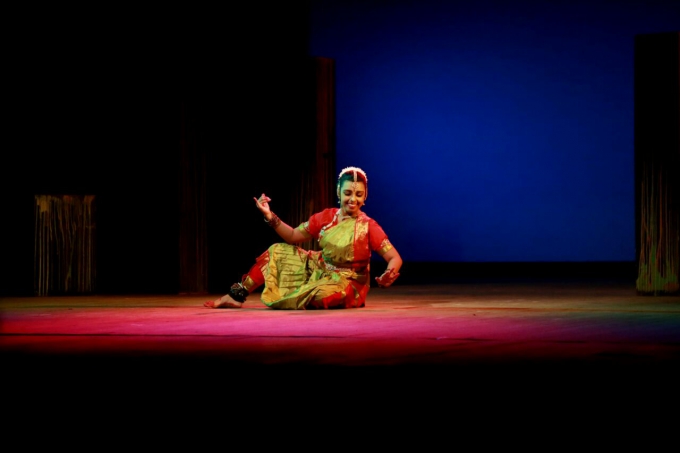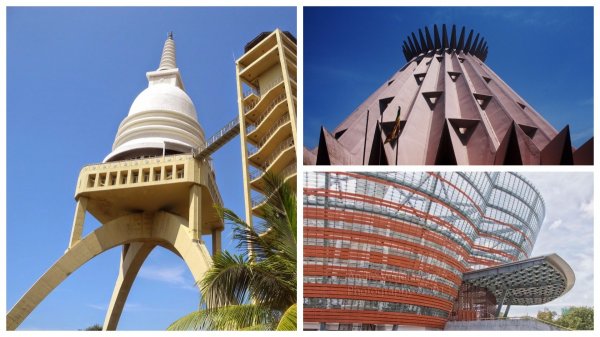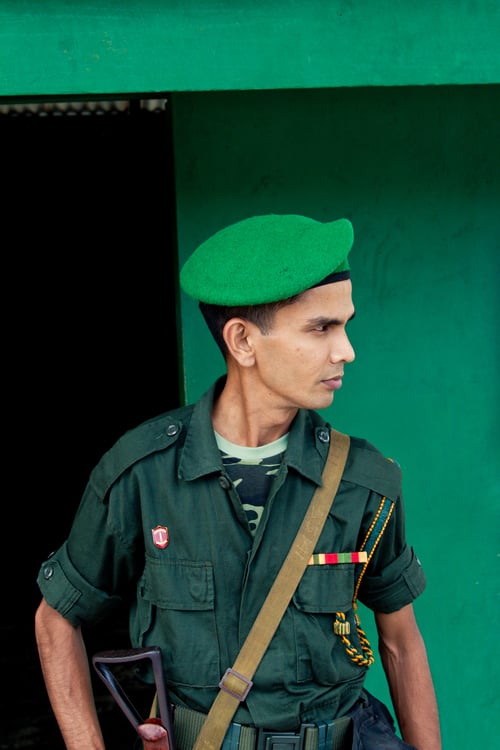
Sri Lanka has three classical dance traditions, namely Kandyan dance, low country dance and Sabaragamuwa dance. There is also another form of dance which has been present in the island for hundreds of years, and that is bharatanatyam, a classical form of dance which originated in South India. It was brought into our island because of the close cultural and economic ties that Sri Lanka has had with the ancient kingdoms of South India.
A Divine Dance

The praise of Lord Shiva in the form of Nataraja—the Hindu god of dance—is a central concept of bharatanatyam. Image courtesy Youtube/BGR VIDEO
Bharatanatyam is one of the most famous traditional dances of South India. The word bharatanatyam is derived from the Sanskrit word bharatanāṭya, and literally means ‘the dance of Bharata’.
Bharata is widely reputed to be the author of the nāṭyaśāstra, an ancient Sanskrit text on theatre that dates back to the 2nd century B.C.
The book Between Theatre and Anthropology by Richard Schechner mentions that some of the movements and poses of the dance tradition have also been identified in ancient sculptures of hindu deities found in several Hindu temples in India. According to Schechner, the best known of these sculptures can be found in the fourteenth-century temple of Nataraja at Chidambaram, south of Chennai.
These sculptures depict Lord Shiva in the form of Nataraja, the Hindu god of dance, who is the central deity of the temple at Chidambaram. The praise of Lord Shiva in the form of Nataraja is one central concept in the dance tradition of bharatanatyam.
Anupama Madhubhashinie, an instructor of Indian classical dance forms, and a professional performer of bharatanatyam, told Roar Media that the style of rigorous dancing, known as thandaav, is a key element of the dance form. According to Hindu belief, this style of dancing is said to have been performed by Lord Shiva as Nataraja. The rhythmic foot movement and muscle movement are part of the thandaav.
From South India To Sri Lanka

Bharathanatyam is an expressive form of dance, which calls for the demonstration of various poses, gestures, movements and facial expressions. Image credit Anupama Madhubhashinie
Speaking to Roar Media, bharatanatyam guru Dr. Subashini Pathmanathan—who is the first woman in Sri Lanka to receive a Doctorate in bharatanatyam from the University of Colombo—said that this form of dance was initially practised by a group of women who were dedicated to serve the Hindu temples. These dancers were known as devadasis, the handmaidens of the gods.
According to Dr. Pathmanathan, these dancers were highly regarded by ancient royalty in the kingdoms of South India, but in the British colonial era, the dance form and those who practised it were looked down upon.
In 1947, under the Madras legislation, bharatanatyam was prohibited from being performed in the Hindu temples of India. But as time went on, those who had mastered this dance form began to practise these dances once again, and started teaching these dances to the younger generations.
These bharatanatyam masters and mentors were known as isai vellalar. As Dr. Pathmanathan notes, it is through the efforts of the isai vellalar that bharatnatyam was taken from the temples to the public stage.
It is widely believed that bharatanatyam was brought to Sri Lanka during the days of the Polonnaruwa kingdom, when the Sinhalese kings married princesses from the ancient South Indian kingdoms.
“These South Indian princesses brought with them a company of people which included dancers, pujaris (Hindu priests) and devadasis to tend to all their religious needs,” said Madhubhashinie.
Archaeological excavations in Polonnaruwa have led to discoveries of ancient statues of Nataraja, and this supports the belief among scholars that bharatanatyam was widely popular during this era.
According to Madhubhashinie, there are no major differences in the style of bharatanatyam that is practised in Sri Lanka and that which is practised in South India.
“The core elements of the dance form, practised in both countries do not have many differences,” said Madhubhashinie. “However, with evolving times, many Sinhalese dance teachers have incorporated certain aspects of traditional Sinhalese folk dances into bharatanatyam. This is vehemently detested by gurus like mine who strive to keep the pure form of bharatanatyam intact,” she added.
Many of the renowned bharatanatyam gurus in Sri Lanka right now, like Vasugi Jegatheeswaran and Dr. Subashini Pathmanathan, received their training in South India.
The Ritualistic Dances Of Bharatanatyam

Madhubhashinie engaged in the performance of a padam—one of the main ritualistic dances of bharatanatyam.
In a traditional ritualistic bharatanatyam dance performance, the following dances are performed: alarippu, jathiswaram, shabdam, varnam, padam and thillana.
Alarippu is a Tamil word which translates to ‘bloom’. This is the first dance that students of bharatanatyam learn—it consists of a set of movements performed to a specific rhythm, which signify the blooming of a flower. This dance does not, however, contain any facial expressions, which are a key feature of many of the other ritualistic dances.
The jathiswaram is a dance which is a little more complicated than the alarippu, but this, too, does not include facial expressions like the former. The shabdam on the other hand is a dance which has a few facial expressions. This dance is also a devotional one; the songs used in accompaniment are those which praise Lord Krishna or any other deity.
The varnam is supposedly the most expressive and complicated of all these ritualistic dances, and a performance of this dance can take up to an hour.
The padam is too, is a dance which employs lot of facial expressions to convey various sentiments and emotions through the performance, and the dance known as the thilana is one which is devoid of facial expression, but only employs elaborate movements and poses.
“To master the art of bharatanatyam, it takes close to twenty years—if practise is done regularly—as these dances have thousands of variants. For instance, there are about sixteen forms of alarippu,” said Madhubhashinie. “To make things easier, gurus nowadays teach a few of these variants, some sadly just one,” she added.
All South Indian classical musical instruments are used to aid bharatanatyam performances, mainly a barrel-shaped double-headed drum called the mridangam, an Indian stringed instrument called the veena, and the flute.
“The guru, who sits with the musicians, usually uses a tiny cymbal-like instrument called karatalas to keep the rhythm during their students’ performances,” Madhubhashinie added.
At one time, Bharatanatyam was mainly practised in the Northern area of Sri Lanka, especially in Jaffna, but over the years the dance form has been practised and taught across the country.
While Bharatanatyam may not be as popular as Kandyan dancing, it is an important aspect of the Hindu and Tamil culture in our country, and is attracting interest because of its vibrant and expressive dance rituals.
Featured image courtesy newindianexpress.com






